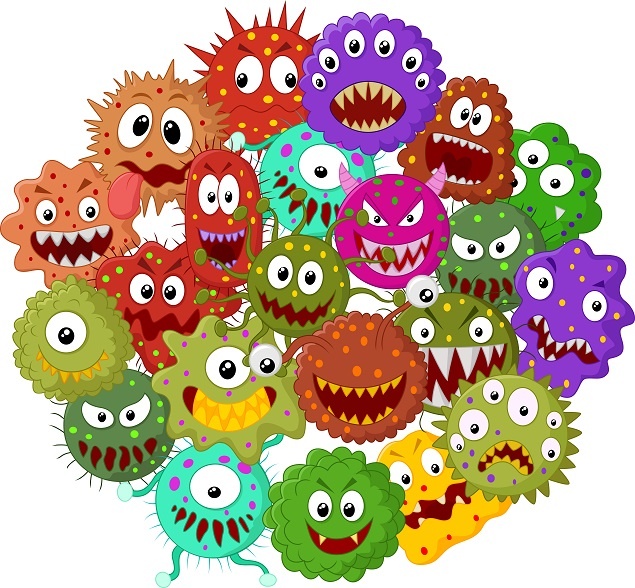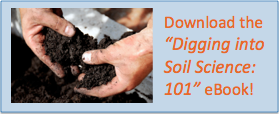By Kaitlyn Ersek on Dec 10, 2015 6:30:00 AM
We all know that our brains make up 3lbs of our body weight... But did you know our body ALSO contains 3lbs of Microbes?
It’s true! Every healthy human body is inhabited by an enormous collection of bacteria, fungi, one-celled archaea and viruses. Because these microorganisms keep our bodies in balance, it is vitally important to maintain optimum levels of the essential probiotics, and to provide the proper food sources for them (“prebiotics”).
According to Mike Amaranthus and Bruce Allyn in their article for The Atlantic entitled “Healthy Soil Microbes, Healthy People”, it is thought that the drugs of the future will be full of people-friendly germs and the foods these microbes like to eat.
 Interestingly, the advancements made in understanding the human gut have helped gain insight into a parallel microbiome—soil! Just as we have unwittingly destroyed vital microbes in the human gut through overuse of antibiotics and highly processed foods, we have recklessly devastated soil microbiota essential to plant health through overuse of certain chemical fertilizers, fungicides, herbicides, pesticides, failure to add sufficient organic matter (upon which they feed), and heavy tillage. These soil microorganisms -- particularly bacteria and fungi -- cycle nutrients and water to plants, to our crops, the source of our food, and ultimately our health. Soil bacteria and fungi serve as the "stomachs" of plants. They form symbiotic relationships with plant roots and "digest" nutrients, providing nitrogen, phosphorus, and many other nutrients in a form that plant cells can assimilate. Reintroducing the right bacteria and fungi to facilitate the dark fermentation process in depleted and sterile soils is analogous to eating yogurt (or taking those targeted probiotic "drugs of the future") to restore the right microbiota deep in your digestive tract.
Interestingly, the advancements made in understanding the human gut have helped gain insight into a parallel microbiome—soil! Just as we have unwittingly destroyed vital microbes in the human gut through overuse of antibiotics and highly processed foods, we have recklessly devastated soil microbiota essential to plant health through overuse of certain chemical fertilizers, fungicides, herbicides, pesticides, failure to add sufficient organic matter (upon which they feed), and heavy tillage. These soil microorganisms -- particularly bacteria and fungi -- cycle nutrients and water to plants, to our crops, the source of our food, and ultimately our health. Soil bacteria and fungi serve as the "stomachs" of plants. They form symbiotic relationships with plant roots and "digest" nutrients, providing nitrogen, phosphorus, and many other nutrients in a form that plant cells can assimilate. Reintroducing the right bacteria and fungi to facilitate the dark fermentation process in depleted and sterile soils is analogous to eating yogurt (or taking those targeted probiotic "drugs of the future") to restore the right microbiota deep in your digestive tract.
The good news is that the same technological advances that allow us to map the human microbiome now enable us to understand, isolate, and reintroduce microbial species into the soil to repair the damage and restore healthy microbial communities. It is now much easier for us to map genetic sequences of soil microorganisms, understand what they actually do and how to grow them, and reintroduce them back to the soil.
These soil microorganisms do much more than nourish plants. Just as the microbes in the human body both aid digestion and maintain our immune system, soil microorganisms both digest nutrients and protect plants against pathogens and other threats. For over four hundred million years, plants have been forming a symbiotic association with fungi that colonize their roots, creating mycorrhizae (my-cor-rhi-zee), literally "fungus roots," which extend the reach of plant roots a hundred-fold.
What Leonardo Da Vinci said five hundred years ago is probably still true today: "We know more about the movement of celestial bodies than about the soil underfoot." Though you never see them, 90% of all organisms on the seven continents live underground. In addition to bacteria and fungi, the soil is also filled with protozoa, nematodes, mites and micro arthropods. There can be 10,000 to 50,000 species in less than a teaspoon of soil. In that same teaspoon of soil, there are more microbes than there are people on the earth. In a handful of healthy soil, there is more biodiversity in just the bacterial community than you will find in all the animals of the Amazon basin.
Read the full article here.
This blog was written by Suzanne Longacre, Holganix Communication Specialist


![Holganix Greater Green Goal [2025 Update]](https://www.holganix.com/hs-fs/hubfs/Blog%20headers%20%232%20%2811%29.jpg?width=224&height=112&name=Blog%20headers%20%232%20%2811%29.jpg)













